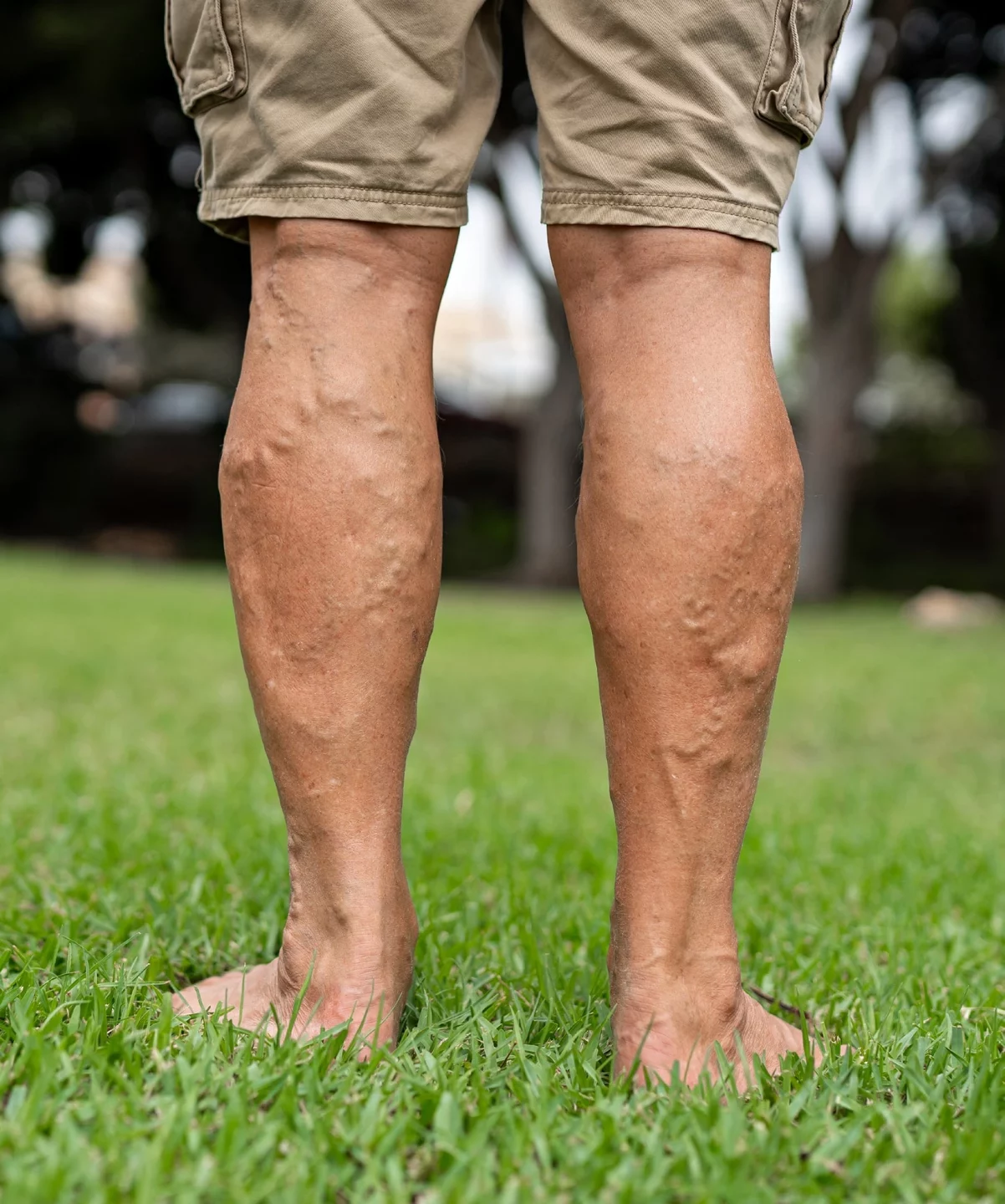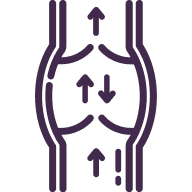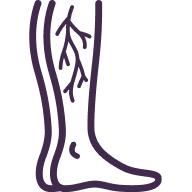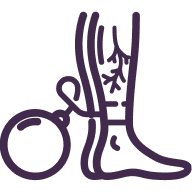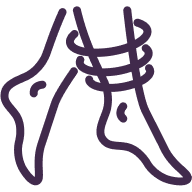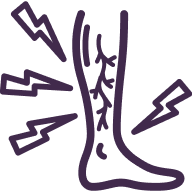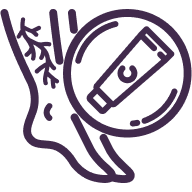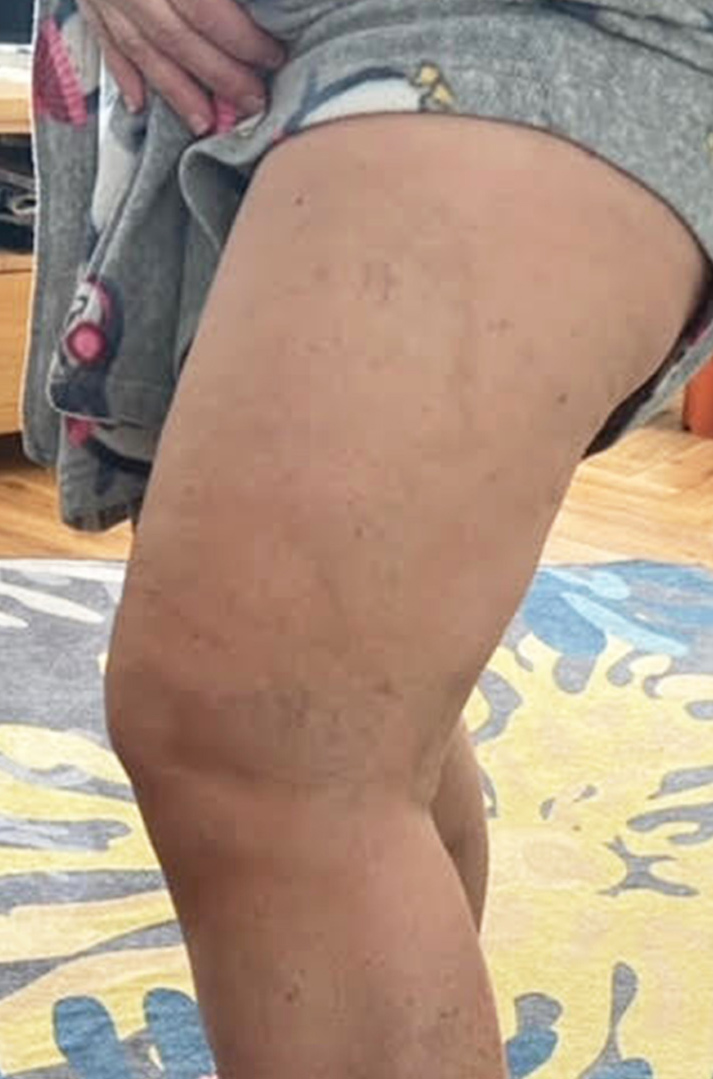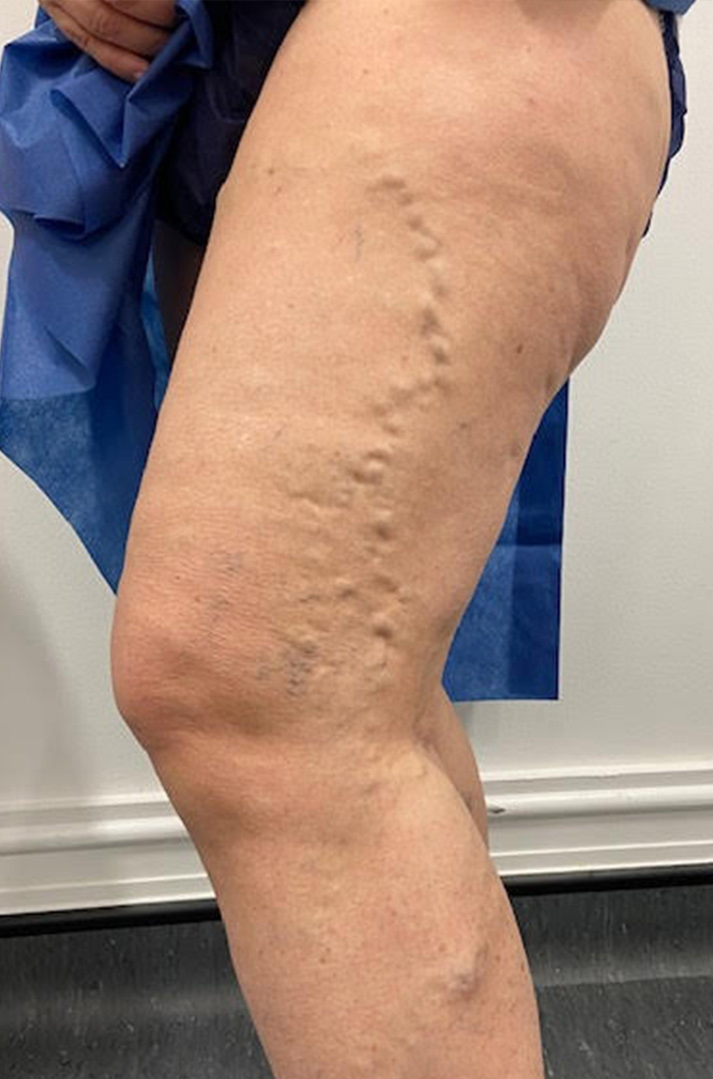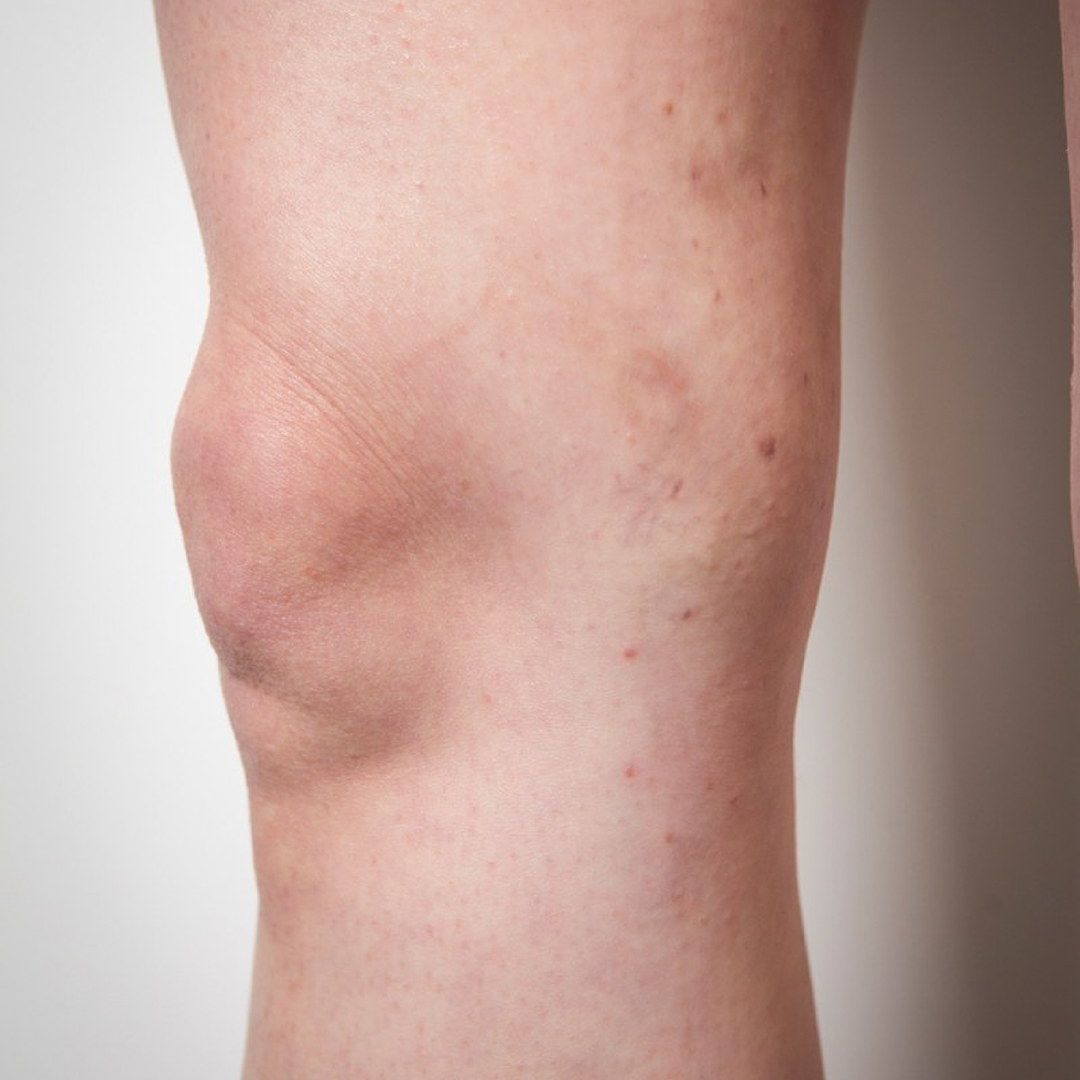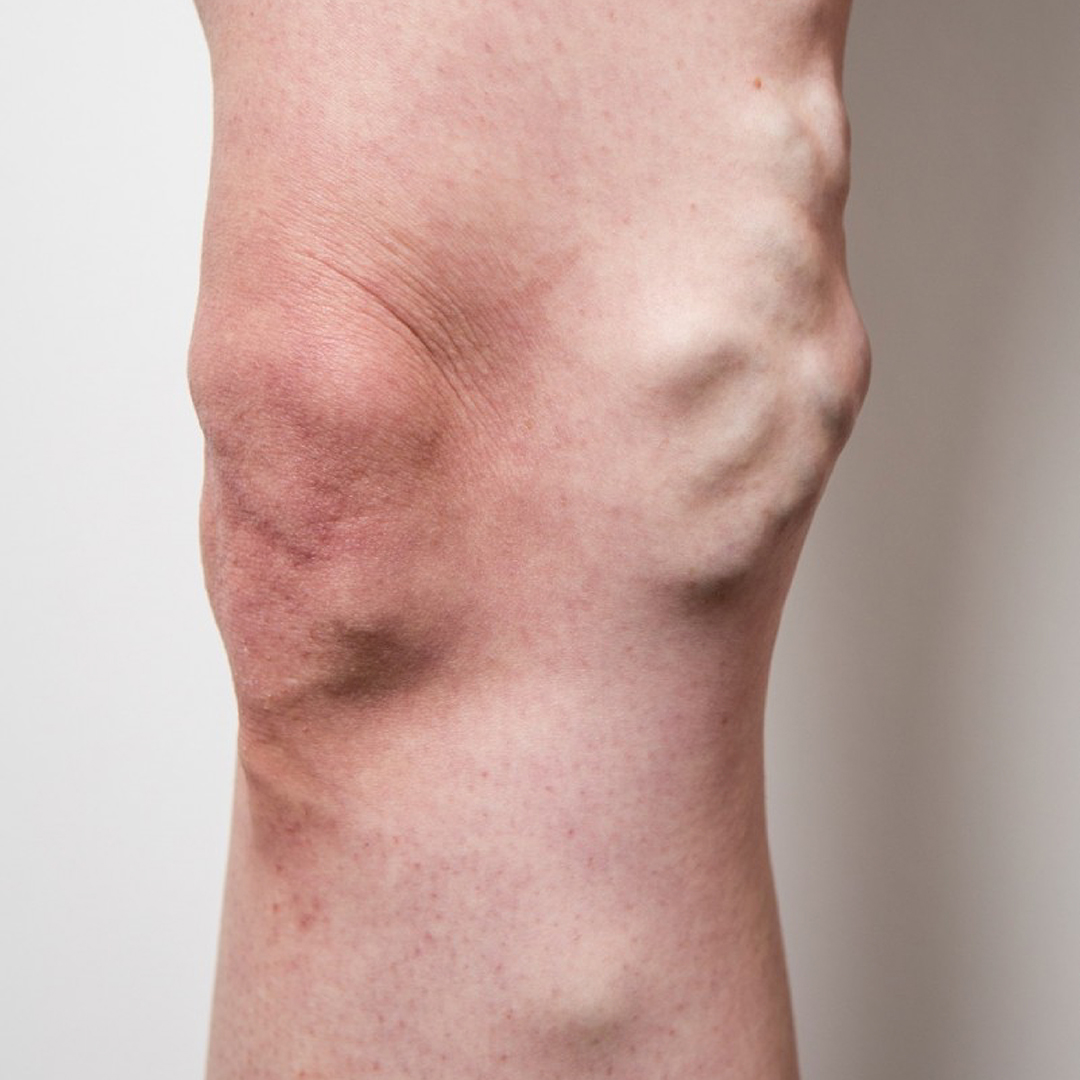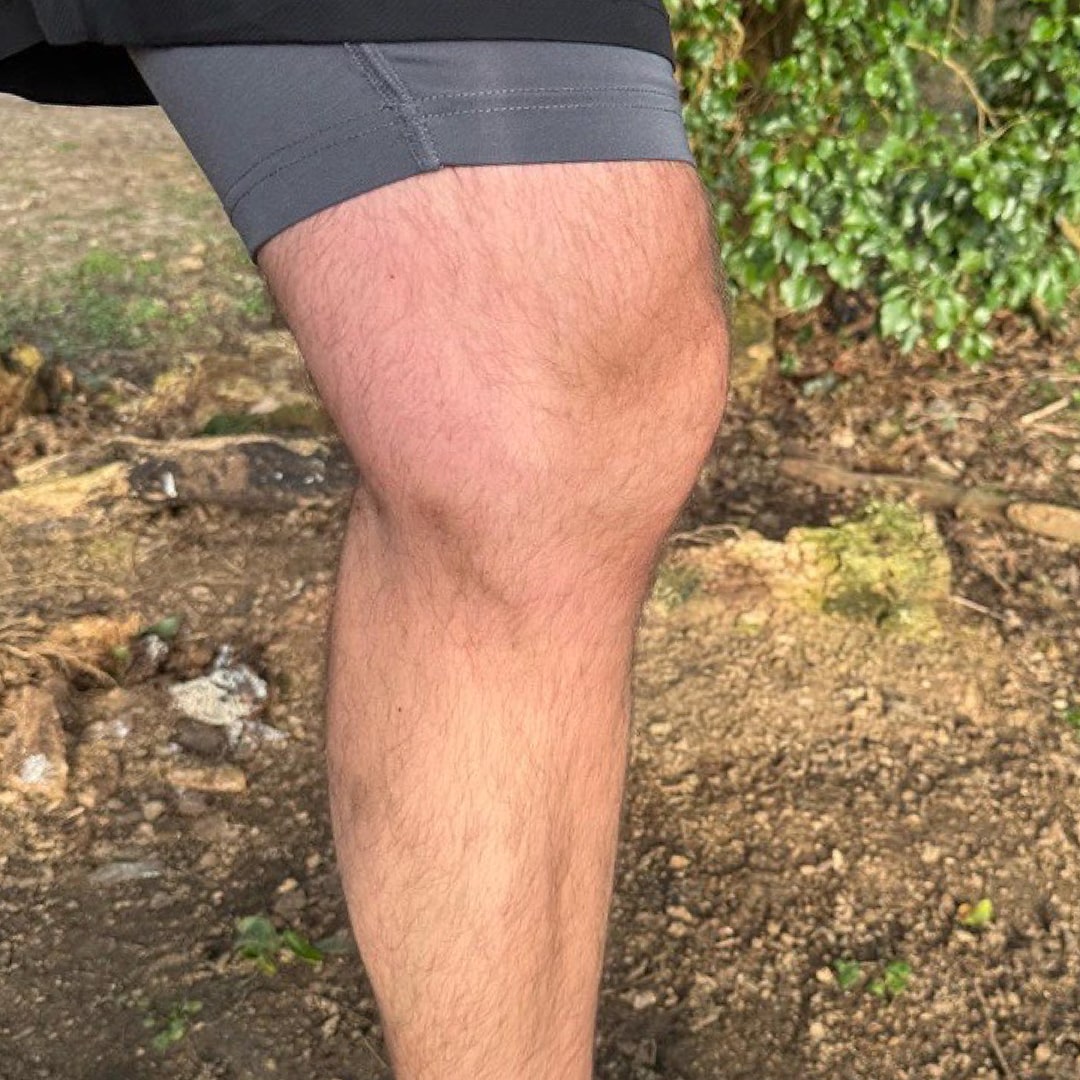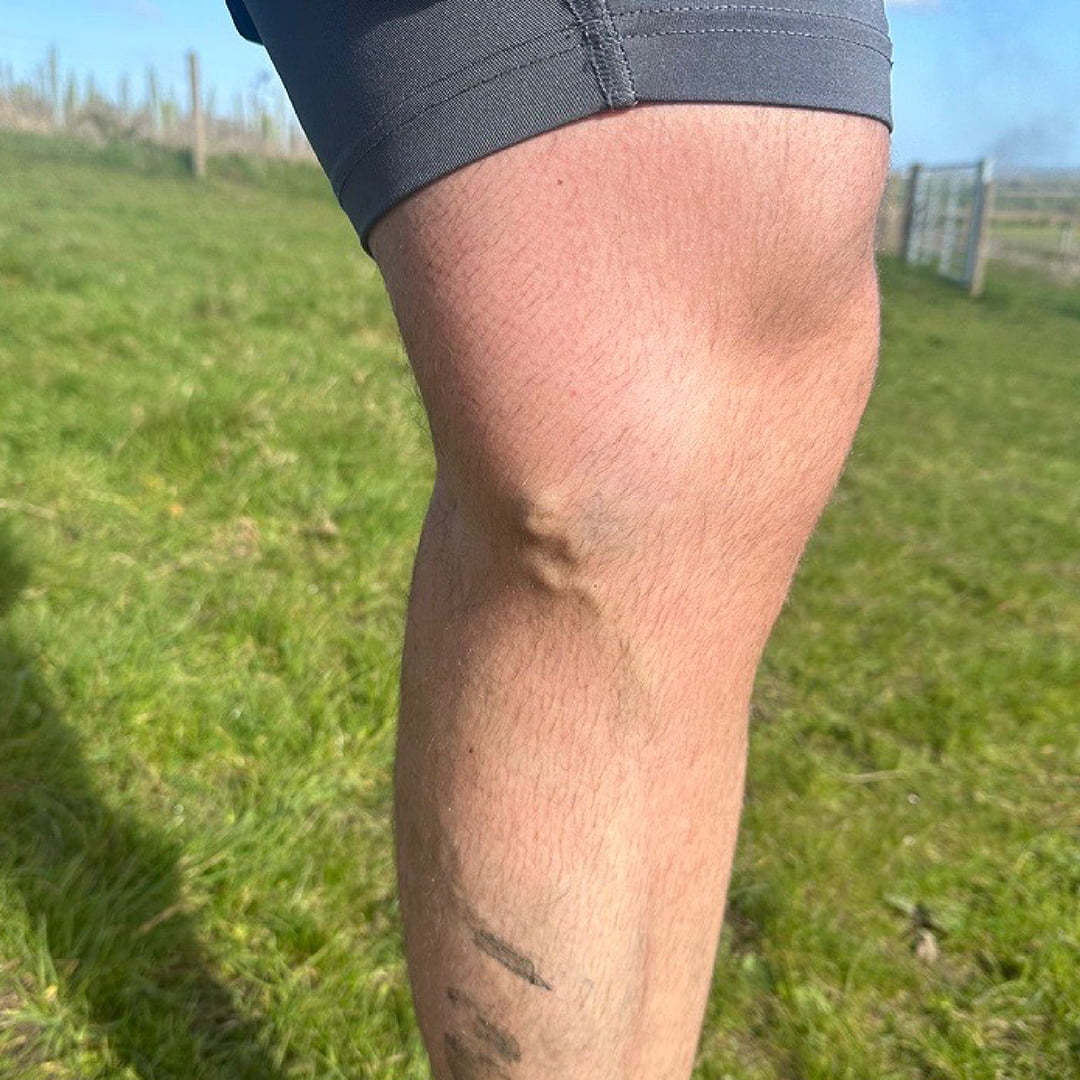Varicose veins (also known as varicosities) are a common condition affecting millions of people in the UK, typically, at least one in three people will encounter varicose veins in their lifetime. They occur when veins become enlarged and twisted, often appearing as raised lines that look blue in colour beneath the skin. While they can cause discomfort and impact confidence, the good news is that effective, minimally invasive varicose vein treatments are available to restore both your comfort and quality of life.
What Are Varicose Veins (And How to Spot Them)?
Key Characteristics of Varicose Veins
It’s natural to wonder how to spot varicose veins. Here are three common signs:
-

Enlarged and twisted veins
-

Often appear blue or dark purple
-

Most commonly found on legs and feet
Symptoms of Varicose Veins
Recognising the symptoms early can help in seeking timely treatment. Common symptoms include:
-

Aching, heavy legs
-

Swelling in the ankles or feet
-

Burning or throbbing sensations in the legs
-

Dry or itchy skin over the affected veins
-

Muscle cramps, particularly at night
What Causes Varicose Veins?
Varicose veins are primarily triggered by underlying causes – specifically weakened vein walls and faulty valves. Contributing factors include:
Genetics
A family history of varicose veins increases your likelihood of developing them.
Age
Vein elasticity decreases over time, making older adults more susceptible.
Pregnancy
Hormonal changes and increased blood volume can put extra pressure on veins (get more information about varicose veins during pregnancy).
Lifestyle
Prolonged standing or sitting and lack of physical activity can exacerbate the condition.
Where Do Varicose Veins Appear?
Varicose veins can develop in several areas of the body, though they most commonly affect:
Legs and Feet
The increased pressure in veins due to standing or walking makes these areas the most susceptible.
Pelvic Region
Women may develop varicose veins in the pelvic area, particularly during or after pregnancy.
Varicose Veins Diagnosis
The only way to accurately determine the underlying cause of your varicose veins is by having a colour duplex ultrasound scan performed on your legs. Without this full and detailed scan, it is impossible to properly assess your veins or determine the exact treatment you require.
What to Expect from Your Consultation
We believe it’s important for you to meet your consultant right from your first appointment. Your consultation lasts around 30 minutes and includes a detailed colour duplex ultrasound scan to assess the underlying cause of your vein concerns.
In most cases, varicose veins develop due to faulty valves in the leg veins, causing blood to flow in the wrong direction. This ‘reflux’ can lead to the lumps and bumps of varicose veins, as well as symptoms like aching, pain, and restless legs. Your consultant will explain everything clearly and provide a personalised treatment plan tailored to your needs.
The best person to undertake the scan is the person who will carry out your treatment. Ensuring that you have your initial meeting with a dedicated vascular consultant is something that we pride ourselves on at VeinCentre. Being able to build a rapport, and hear first-hand the wealth of expertise that our consultants have, is priceless and gives you immediate peace of mind.
How to Avoid Varicose Veins
While some risk factors, such as genetics, cannot be changed, there are steps you can take to reduce your risk:
✓ Maintain a healthy weight
✓ Exercise regularly to improve circulation
✓ Avoid prolonged periods of standing or sitting
✓ Elevate your legs when resting
✓ Wear compression stockings (if advised by a healthcare provider)
Treatment Options
At VeinCentre, we specialise in minimally invasive treatments for varicose veins. Our expert vascular consultants provide care tailored to your individual needs, using techniques such as:
Endovenous Laser Ablation (EVLA)
We specialise in the most effective, minimally invasive treatment for varicose veins, known as EVLA. This is a modern walk-in, walk-out procedure that avoids the need for general anaesthetic and means you’re up and about after only around an hour. All our treatments are endorsed by NICE.
Learn more about EVLA and its effectiveness for varicose veins on our EVLA treatment page.
Foam Sclerotherapy
A quick, effective option for treating smaller veins. Read about how Foam Sclerotherapy can help address varicose veins.
Varicose Vein Treatment Before & Afters
It’s always reassuring to see how others have benefited from varicose vein treatments. You can read about the experiences of others who have undergone varicose vein treatments in more detail here. Our patients are our biggest advocates, and you can find a whole host of people who are happy to share their stories with you.
You are in safe hands. We have over 20 years of experience and thousands of 5* reviews.
All treatments are performed under local anaesthetic, allowing you to walk in and out of the clinic the same day with no lengthy recovery periods.

